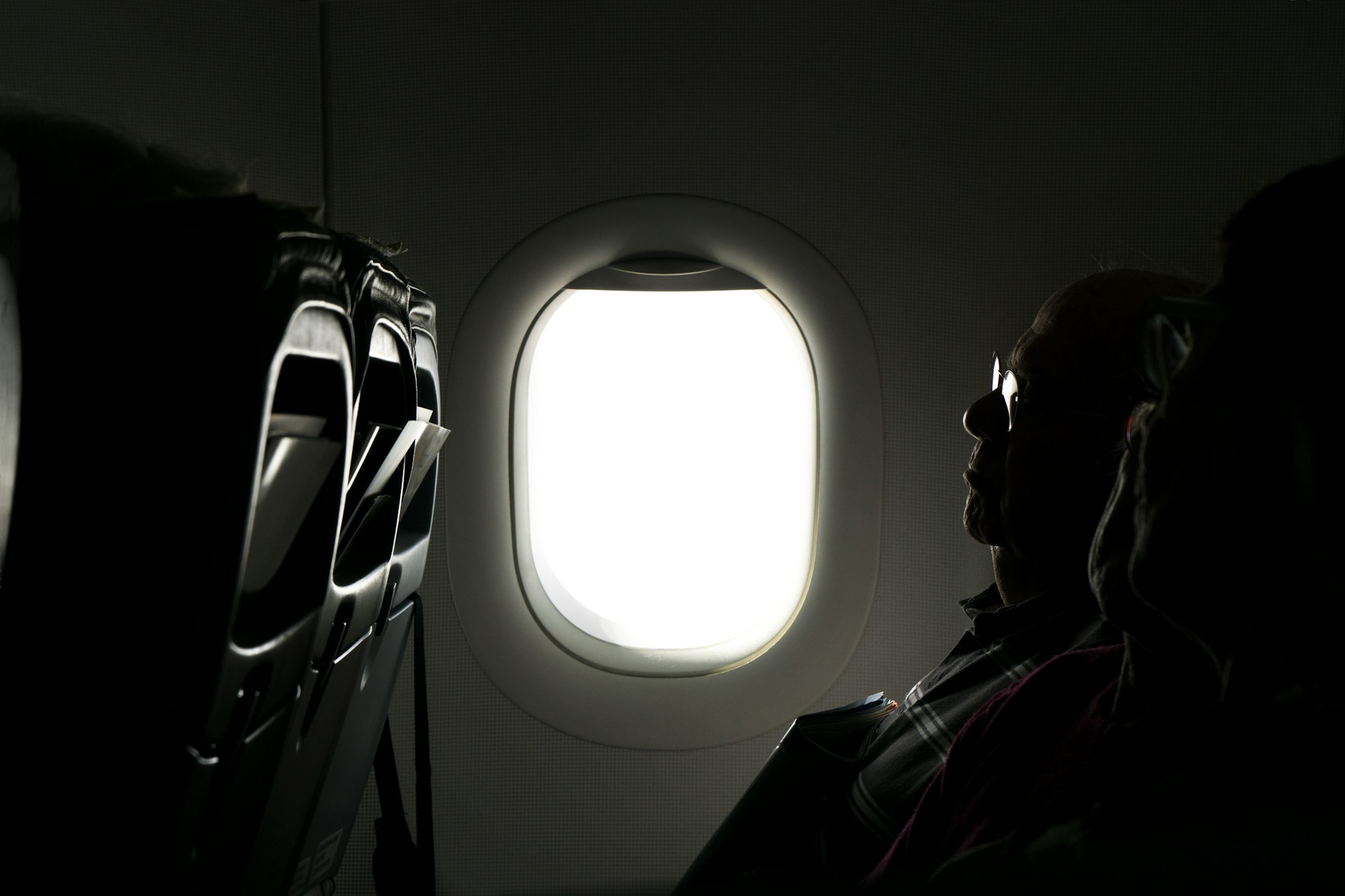How to Survive Long-Haul Flights in 2022: Tips & Essentials
This guide helps you survive long distance flights by providing the simple tips you need to know and the list of the essentials you need to bring.

Long distance flights are usually particularly exciting, whether you're a frequent traveller or not. Why?
Because taking a long-haul flight means that you're going somewhere far away from home!
Only, to enjoy this adventure, you first need to learn how to survive long flights. Those can take a toll on both your body and mind.
In this complete guide, you will learn how to survive long-haul flights. We've included the best tips for that, along with a checklist of the packing essentials to make the trip easier, and even a few interesting facts at the bottom of the post, to help you shine in society when talking about travel.
But first...
What are Long-Haul Flights?
The most common criteria to determine whether a flight is short-, medium, or long-haul is the flight time, from departure to arrival at destination. The exact amount of time that classifies a flight as long distance, however, varies.
The perhaps most accepted definition of a long-haul flight is one that takes over 10 hours from departure to arrival.
However, one could easily argue that flights shorter than 10h can be long-haul. According to a Tripadvisor contributor, "in Europe a long haul flight is typically above 4 hours, in the US, 7 hours".
Airlines tend to make up their own definition of what they consider long-haul travel. For example, Air France defines short-haul as domestic, medium-haul as within Europe/North Africa and long haul as the rest of the world.
Flights above 15 hours are even qualified as "ultra long-haul".
In practice, a long-distance flight is one that is so long that is so long that sleeping (or at least trying to) is justified, that you will eventually get bored, and that your body and mind will be affected by it.
Which begs the question:
How to survive long-haul flights?
There are 5 main obstacles that get in the way of an air passenger trying to have a good flight experience:
- A bad seat
- The lack of comfort
- Boredom
- The inability to sleep
- Bodily discomfort
The next sections aims at ensuring that you will face none of these problem during your long-distance flight.
Tips on Surviving Long-Haul Flights
1) Choose the best seat you can afford
Upgrade from Economy Class
Your seat is the main element to consider for surviving long flights. If you're a frequent flyer who has been saving miles, spending them on an upgrade to fly Business or First is a great idea. Miles are best used when spent to save money on flights.
While Economy seats on long-haul flights are much better than for your average short distance flight, avoid it if you can. In situations where you can't, make sure to at least pick your seat.
Window or aisle
You do NOT want to fly for several hours in the middle seat. Check-in as early as possible or, better yet, reserve your seat at the time of purchase.
Whether you should book a window or aisle seat is up to you, as both have their pros and cons. As a rule of thumb, if you're planning on trying to sleep during most of the journey, pick the window; if you need to stand up often, choose the aisle instead.
2) Make sure you'll be comfortable
Choose your travel clothes with care
You're going to be in this metal bird for a while, so be sure to get comfy: large pants, leggins, an oversized sweater, etc. Again, it's up to you, as long as they're comfortable. Avoid jeans and shirts, and other clothing items that restrict your movements.
Consider several layers: the temperature can vary and you may get cold. The layers that you don't use can always be used as blankets, pillow, or lumbar support (more on all that below).
Save legroom, take a small carry-on
Legroom is sacred when you take the plane; even more so on a long flight. You will come to worship every scare inch of space available for your feet.
So do yourself a favor and avoid bringing a large carry-on that will occupy the whole space below the seat in front of you. You don't need to bring much, just the essentials - which are listed in a section further below.
3) Think in advance of how not to get bored on the plane
Entertainment
There will probably be inflight entertainment and sometimes, that's enough. However, just in case, prepare other things to distract your left from what will perhaps seem like an endless flight.
Think movies, music, books (digital or not), games, apps, etc. just don't forget what we mentioned earlier: it shouldn't take much space.
Work
Alternatively, you could enjoy those few hours without phone calls and new emails to get some work done.
Finally, you can take advantage of the flight to catch up on those missing hours of much needed sleep. We've already talked about how to sleep on the plane in a different post, but we still listed some key elements in the next section.
4) Make sure you're well-prepared to sleep on the plane
Be careful with what you eat and drink
Avoid any kind of food that might hinder your digestion. Some snacks that you've brought might be a better option than that heavy meal served on board.
Obviously, if you're planning to sleep, avoid caffeine. Less obviously, avoid alcohol too: you might think it makes you sleepy, especially when you're afraid of flying, but you will have more trouble getting some Z's after a drink. Some argue that green tea is the best drink before bed, try it if you want; my personal experience with it is that I need to go to the toilets more often after drinking some, so I stick to water instead.
Follow your sleeping routine
This is one of my top tips to survive long-haul flights. What do you do at home before going to bed? Maybe you read or watch a movie, then you (hopefully) brush your teeth, and change into your pajamas.
Try to stick to these habits to trick your body and mind into thinking that it's time for bed. Use the toilets to brush your teeth. Some passengers do change into actual pajamas!
Pack your sleep gear
I'm not one to use any of this, but if I have to make an exception, it's going to be during a long-haul flight. We've included those in the long flight essentials further down.
Bring a sleep mask if light prevents you from falling asleep. Noise-cancelling headphones or earplugs are probably a good idea too if you're sensitive to noise. Perhaps more importantly, make sure you have a travel neck pillow or something that can pass as a pillow for the length of the flight.
Download white noise and meditation sounds
These can help you relax and fall asleep more easily.
Sleep aid
Sleeping pills can also assist you in falling into Morpheus' arms. Just make sure that you don't try them for the first time on the flight: some passengers have found that some pills had the opposite effect on them, keeping them awake.
5) Take care of your health
Hydration
Flying has odd effects on the body. One of them is that your body will dehydrate faster.
Make sure that you drink enough during the flight. You might also want to consider some hydration cream, at least for your hands and face.
Blood flow
Flying, especially at high altitudes as it the case for long-haul flights, also impacts your blood flow. The National Institute of Health estimates that the risk of developing Deep vein thrombosis (DVT) increases for flights longer than 4 hours.
This happens when blood clots form in deep veins. They recommend walking along the aisle, flexing and stretching your legs. Some doctors also recommend wearing compression socks during the flight.
These tips should be enough for surviving a long-haul flight. Now that yo have the tactics, make sure you have the tools to implement them: the following section lists the long flight essentials you need to carry on board.
Things to Take on a Long-Haul Flights: the Essentials
- Liquids: for hydration (to drink and for ou skin). Just don't go over the 100ml limit during the airport security check
- Sleeping accessories: travel neck pillow, eye mask, ear plugs/noise-cancelling headphones
- Clothes: comfy pants and sweater, scarf (+compression socks)
- Lumbar support: seats are shaped like a C while our spine is closer to an S, so bring something to support your lower back - it can be the scarf listed above
- Food: light snacks
- Entertainment: a book or ebook, a portable console or simply your phone
- Portable battery charger: to ensure your phone is charged when you arrive at destination
Superlatives in the World of Long-Haul Flights
What are the Best Long-Haul Airlines?
Singapore Airlines and Emirates are often regarded as the best airlines for long-haul flights.
Cathay Pacific and Qatar Aiways are usually listed among the runner-ups and are definitely some of the best long-haul airlines.
In our Airline Ratings 2019, South African Airways was the best airline in the world.
What are the Longest Long-Haul Flights?
These are the longest flights in the world in 2019:
- Singapore Airlines: Singapore – Newark
Distance: 15343 km (9,534 miles)
Flight time: 18 hours 30 minutes
2. Qatar Airways: Auckland – Doha
Distance: 14,536 km (9,032 miles)
Flight time: 17 hours, 50 minutes
3. Qantas: Perth – London
Distance: 14,499 km (9,009 miles)
Flight time: 17 hours, 25 minutes
4. Emirates: Dubai – Auckland
Distance: 14,200 (8,824 miles)
Flight time: 17 hours, 10 minutes
5. Singapore Airlines: Singapore – Los Angeles
Distance: 13,833 km (8,770 miles)
Flight time: 17 hours, 50 minutes
6. United: Houston – Sydney
Distance: (8,596 miles)
Flight time: 17 hours, 30 minutes
7. Qantas: Dallas Ft. Worth – Sydney
Distance: 13,804 km (8,578 miles)
Flight time: 17 hours, 10 minutes
8. Philippine Airlines: Manila – New York JFK
Distance: 13,711 km (8,520 miles)
Flight time: 16 hours, 35 minutes
9. United and Singapore Airlines: San Francisco – Singapore
Distance: 13,594 km (8,447 miles)
Flight time: 17 hours, 20 minutes (United), 17 hours, 35 minutes (Singapore Airlines)
10. Delta: Johannesburg – Atlanta
Distance: 13,581 km (8,439 miles)
Flight time: 16 hours, 50 minutes
(Source: Forbes)
Now you Know How to Survive Long-Haul Flights
With this guide, you should be able to make it past this long flight and actually enjoy your destination!
If your long distance flight was even longer than planned because of a flight delay, know that you can claim up to 600€ from the airline.
With ClaimCompass, you don't have to lift a finger. We handle the entire process for you.
